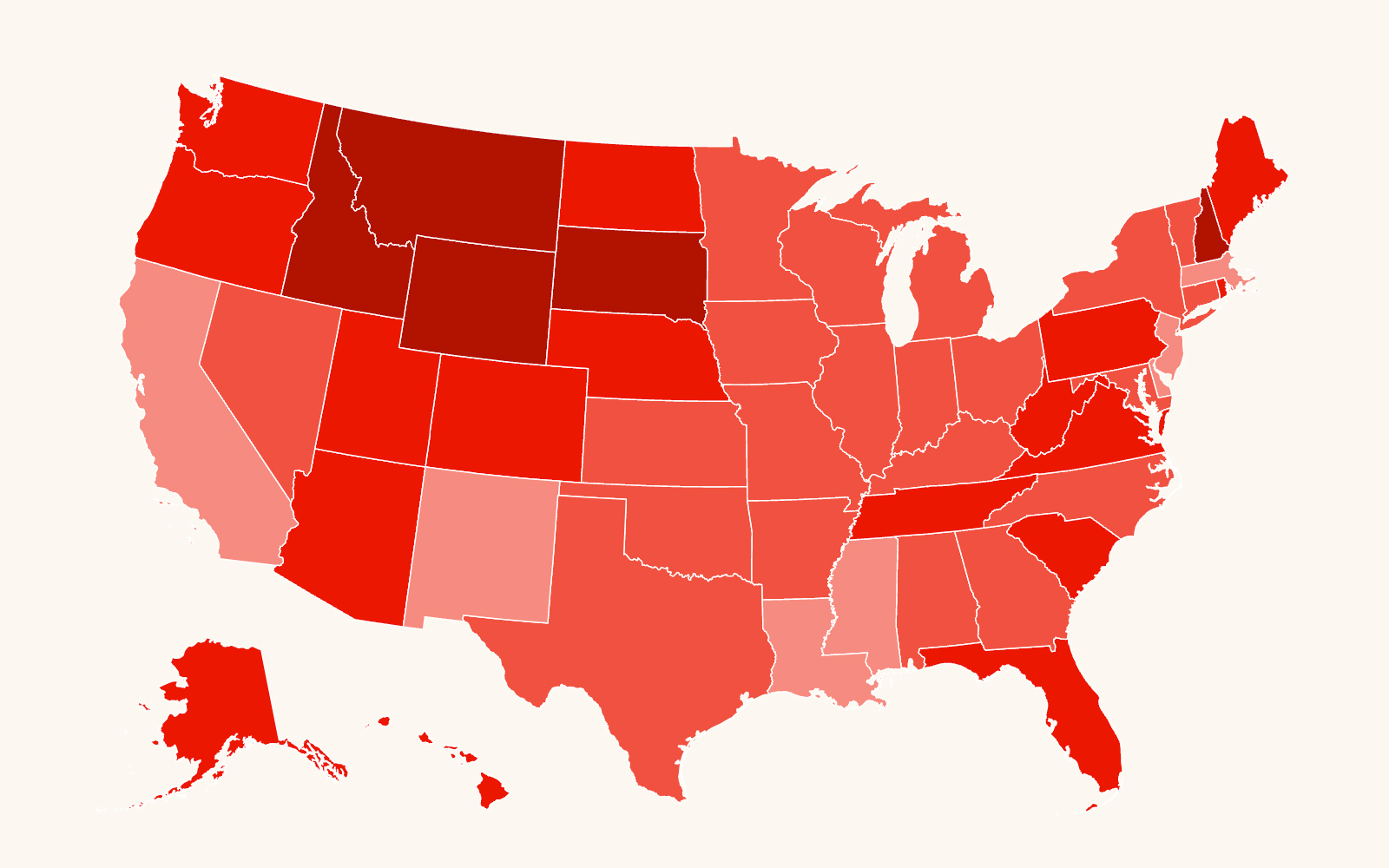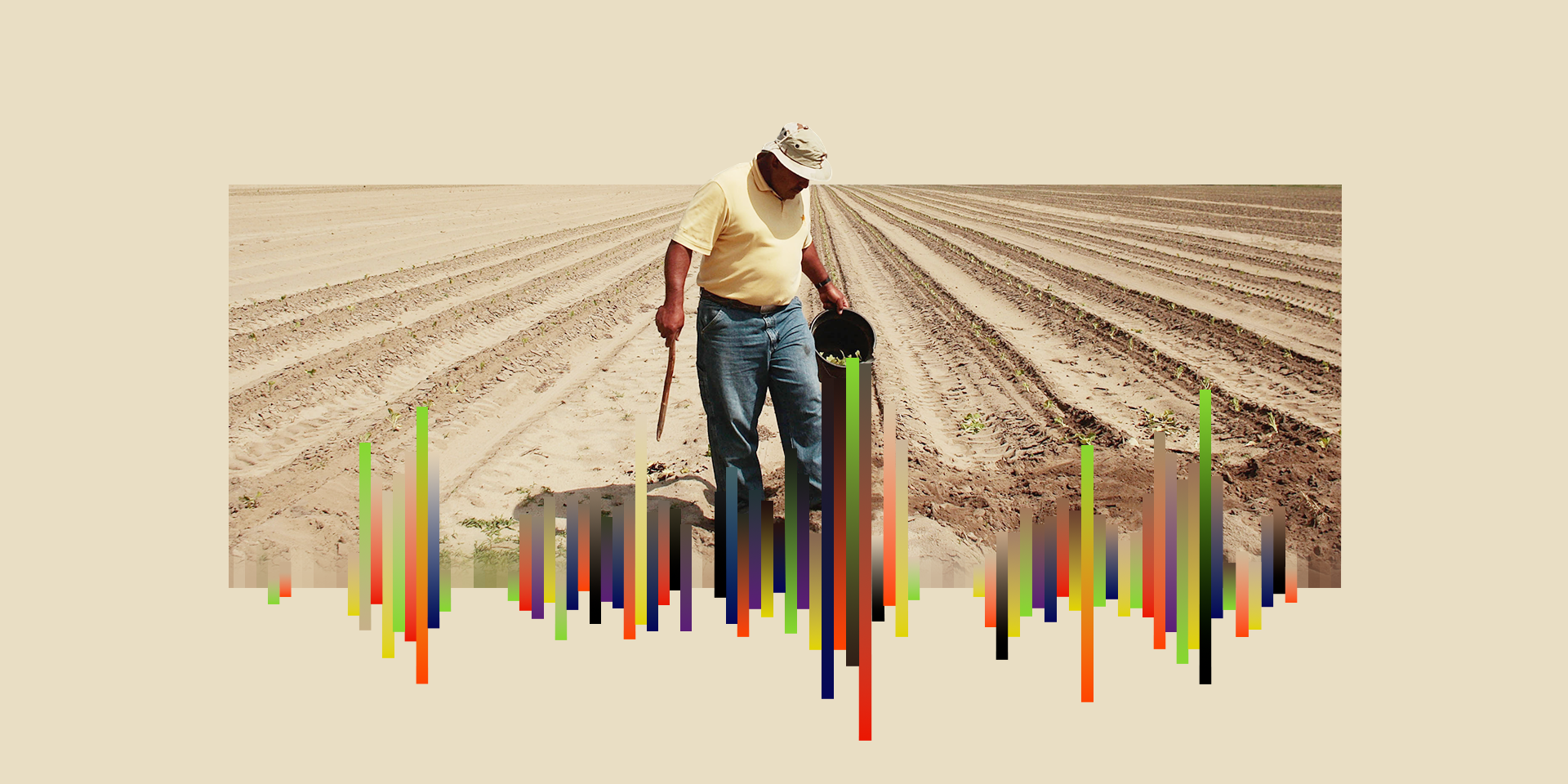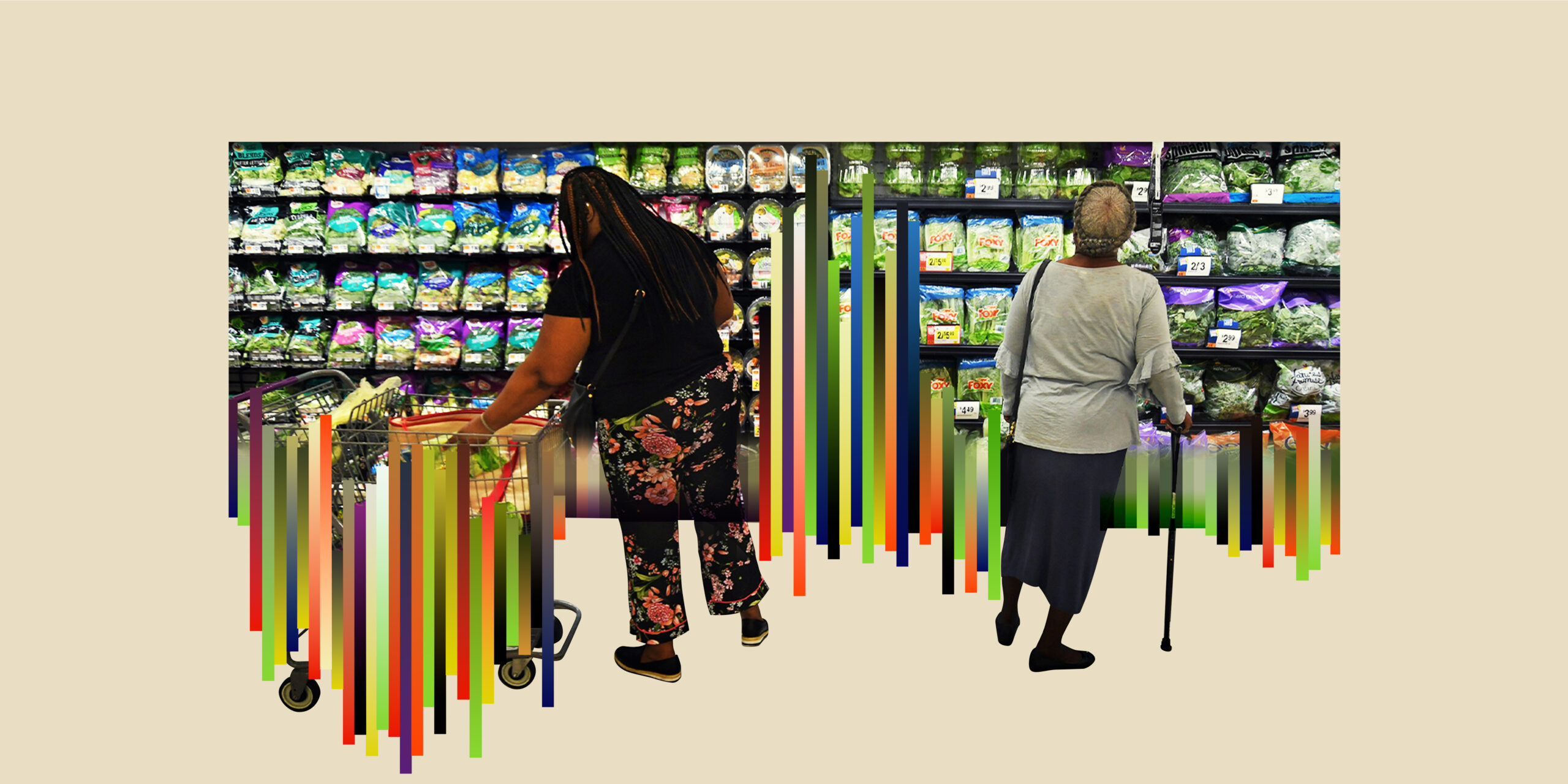Editor’s note: This is the fifth story in the “Cuts & Consequences” series about the effects that federal spending reductions would have on people living in the Deep South.
Rafael Guerrero and his four brothers had worked as agricultural harvesters their whole lives. But as the world was coming out of its COVID-19 bubble in 2023, they started their own family farm. Guerrero’s parents, wife and three daughters are all part of the enterprise along with his brothers.
“It’s something we went into as a family,” Guerrero said. “We have three generations of harvesters doing the hard stuff in the field, but we’re first-generation farmers.”
Located in Lyons, Georgia, the Guerrero farm abuts the town of Vidalia, famous for the sweet onions grown there. The work is challenging, but the family has made progress. The farm grew from its original 120-acre plot to 180 acres after its first year, with half of the acreage planted in Vidalia onions and the other half split between a mixture of squash, watermelon, peppers and sweet corn.
But now Guerrero and his brothers are shopping around for other options. With the cancellation of existing federal funding for food banks, local school food purchases and foreign aid, the market for much of their crop disappeared as fast as rain off a hot Georgia blacktop in the summertime.
“It’s affecting us directly,” Guerrero said. “We were selling to food banks, schools, hospitals and places like that. Then that market’s gone. We have 75 acres of our Vidalia onions that we had sold that we’re crunching right now to see what we can do with them. It’s rough.”
They are not alone. Across the agricultural landscape, farmers of all types — whether they produce grain, cotton, soybeans or other crops — are hustling to find buyers, trying to develop a plan to work around the elimination of billions of dollars in federal market purchases. The task, especially for small, local farmers, is daunting.
What’s worse is that the damage happened so quickly — between huge cuts to U.S. Department of Agriculture (USDA) staff and food programs, grant opportunities and a growing tariff-fueled trade war — that there was no opportunity for most growers to develop a backup plan.
“You’d think that, as close as the season is, by now we would have a game plan,” Guerrero said. “But we don’t. The way we work, we do our crop plans four or five months ahead of time. Everything had already been approved, then this happened, you know? So we’re kind of between a rock and a hard place as of now.”
And as hard as the collateral damage of the cuts to social safety net food programs is hitting farmers, the effects are far harsher for the people in need — largely children and elderly people — who benefit from the programs.
“Families in the Deep South consistently experience food insecurity at rates higher than the national average,” said Margaret Huang, president and CEO of the Southern Poverty Law Center. “Yet, instead of working to expand access to affordable food across the region, the Trump administration is leading efforts that will directly and indirectly harm local farmers, drive up prices, and wreak havoc on our food system. It’s astounding that Trump and his inner circle would intentionally exacerbate the hunger crisis and so casually play politics with people’s lives.”
Rising prices all around
Republicans have touted their strong support among farmers for years. In a speech on April 3 in which President Donald Trump announced a slate of tariffs varying from 10% to 54% worldwide, he mentioned farmers as one of the beneficiaries, along with the auto industry, of the trade war he ignited.
Then, on April 9, he pushed tariffs on some nations higher, including a whopping 104% tariff on goods from China. Hours later, he put all reciprocal tariffs except those on China (which he raised to 145%) on a 90-day pause.
But America’s farmers were already feeling the heat — not from other nations, but from the Trump administration’s other tariffs. Approximately 85% of the potash (potassium chloride) imported for use in U.S. agriculture comes from Canada. The price of potash, a necessary ingredient for fertilizing fields, rose 5% in March and is currently up 10% over the March 2024 price.
In the last week of March, Ricky Gonsoulin was directing his sons from the cab of his John Deere tractor in Iberia Parish, Louisiana, as they applied fertilizer in one of the family’s sugar cane fields.
“I’m just trying to get my numbers squared away,” said Gonsoulin, a sixth-generation sugar farmer. “Damn fertilizer is so expensive you can’t mess up, you know? You got to put the right amount out, the right amount exactly on the number, or it costs you more money.”
Unlike the startup Guerrero farm, the Gonsoulin family traces its farm’s roots to more than a century ago. Gonsoulin is also involved in local politics, currently serving as mayor pro tem for the city of New Iberia.
Unlike the Guerrero operation, he said the elimination of federal contracts and programs will not have a major impact on the market for his sugar because it is primarily sold to local producers.
“Sugar is one of the few industries where you’re not going to see a drop in demand for your product,” Gonsoulin said. “You’re not worried about trying to export. But the consumers who are using your product domestically are going to see the price go up because of everything else.”
And those prices are going up. Aside from potash, Gonsoulin said he expects global tariffs on steel to push the prices of tractors and replacement parts up as well.
Even before the April 3 tariffs were announced, Gonsoulin said he was seeing his expenses rise. Yet as a Republican, he said he still supports the tariff push and Trump’s efforts to streamline government and protect U.S. markets. But he doesn’t offer that support blindly.
“Now, listen, it is a tax, no doubt,” Gonsoulin said of the tariffs. “It is a tax, but you need to play with it and try to take out what’s to the best advantage for the American people. Maybe it’s just a message. Yeah, sometimes that’s all it is. Because that’s what it turned out to be with the Chinese (2018 tariff war, during Trump’s first term). Because by the time he spent all the money subsidizing the farmers, it was a net break even.”
The 2018 trade war with China, even if considered a “break even,” was a targeted scrimmage that pales in comparison to the global scale of the current tariff effort. Subsidizing potentially affected industries would cost trillions of dollars.
This time around, however, China is aggressively responding to the Trump tariffs with its own package of tariffs. In March, it placed a 15% tariff on major U.S. imports like beef, pork, chicken and soy. On April 4, it responded to the latest trade war escalation with a 34% tariff on all imported U.S. goods. And today, China announced that it will raise its tariffs on American goods from 84% to 125%.
Small farms at risk
In Birmingham, Alabama, Andre Carter said he considers himself more of a “paper farmer.” He works with other small growers to find markets for their crops through a cooperative, a task that is becoming more difficult as federal food programs are shuttered.
His biggest concern, though, is what will happen to the local growers if they are sidelined for four years.
“When you have people who don’t necessarily understand how intersectional economies are, they’re thinking, ‘Maybe if we cut this market over here, we cut this or we stop supply supplying this, this is efficient,’” Carter said. “I don’t see that as efficient.”
Although he said he voted for Trump in his first term, Carter said he couldn’t do that again.
“The cutting of fat is great,” he said. “Everybody likes that, right? Everybody likes for government spending to go down so we don’t have to pay as much debt. But when you cut out programs like LFPA [Local Food Purchase Assistance, a USDA program that provided funds for food banks to purchase from local farmers] or farm-to-school [also known as Local Food for Schools, another federal program cut in March] or any of those programs that really support those local small producers, we realize that we do need to support our local food production.”
Carter said his biggest fear is that the federal attempts to cut spending and the cuts through the Department of Government Efficiency (DOGE), when combined with tariffs on equipment and chemicals, could force many smaller farmers out of the industry entirely.
“It’s like they are playing a game, but it’s not a game. I don’t know if the American farmer will be able to rebuild it if we pull out the wrong Jenga block,” Carter said.
“I think that it’s going to be a collapse for our local small farmers,’” he said. “Yeah, you’re going to have your big companies, your big green giants, your big rice producers — you know, the Uncle Ben’s. But what they don’t realize is that the people who supply Uncle Ben’s are still small farmers, right? What they don’t realize is that farmer who supports Walmart is still a Latinx farmer in Georgia, right?”
Low cotton and canceled grants
Adrain Nelson and his brothers Willie, Willis and Courtney began farming in 2016. They took over the farm their father had worked, growing from 40 acres given as a post-Civil War land grant that their grandfather later purchased into 240 acres. The farmers lease another 3,500 acres on which they are currently growing cotton.
A lot of their preparation for a crop is done well in advance of the actual planting, using USDA grants for new equipment, adding irrigation and amendments for the soil.
This season, however, Adrain Nelson said they will have to eat those up-front costs.
“We took advantage of many of those USDA Climate-Smart grants this past season,” he said. “We planted cover crops to reduce tillage. We were also going to use some of that money to put down irrigation wells and improve the operation. But now those (grant) funds are gone. So that’s added cost that we had put into our budget and spent that there’s no longer funds to cover.”
He said that even a small expense, like planting a ground cover to enhance the soil in the fallow season, can rack up a large debt for the farmers.
“The cover crop, it costs roughly $10 to $15 an acre, so you do the math,” he said.
Compounding that is the expected challenges the brothers will face when they try to move their crop to market. Nelson said they do have a multinational textile company that will take their crop, but any price it fetches will be adjusted for the tariffs that will be attached.
“Well, we have domestic clients to be sold to,” he said. “But, you know, our market is derived off the book prices. And they deal with a lot of markets outside of the U.S. So I know that they’re going to lower market price.”
As part of their capital outlay, the Nelsons also purchased a variable-rate fertilizer, which applies fertilizer at different rates across a field based on need instead of at one set rate. That equipment — a $50,000 investment — required an upgraded tractor. They leased two tractors, intending to use grant funds to cover the cost.
Now those funds aren’t coming. At least not as things stand. But Congress is currently debating its annual federal budget. Depending on how that goes, some Trump administration and DOGE cuts could be rolled back. Or, if the realization of how cuts to food and aid programs hurt other parts of the economy — specifically farmers, already saddled with tariffs — some funding could be reinstated.
For now, the Nelsons will have to make do with what they have.
“That’s another cost that we just got to eat because once you get in the lease deal, you can’t get out of it,” Adrain Nelson said. “These grants were already spent before they canceled everything.”
Image at top: The cancellation of federal funding for food banks, school food purchases and foreign aid has left small farmers scrambling to find buyers for their crops. (Photo illustration by Katie Martin).








